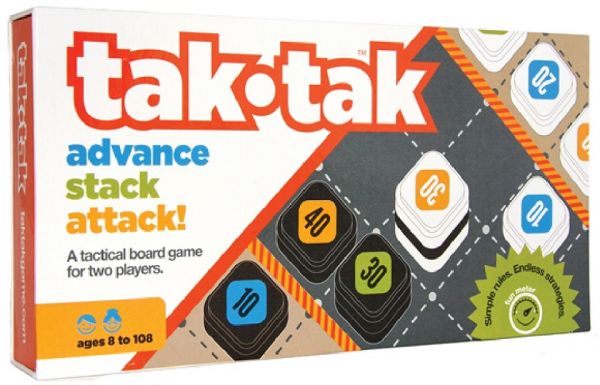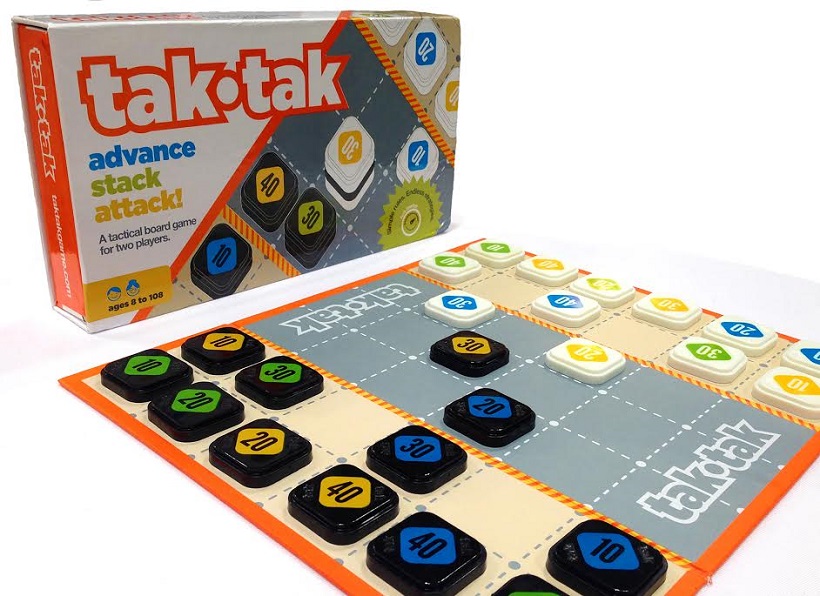Attack and Stack: A Review of Tak-Tak

It you’re looking for a two-player game that packs a lot of strategy into a short amount of time, Tak-Tak has everything you need.
Gameplay
The board is divided into two safe zones on either end and one war zone in the middle. At the beginning of the game, each player arranges their 12 pieces in any order they like in their respective safe zones. Each piece has a number (either 10, 20, 30, or 40) and a color (either green, yellow, or blue). On your turn you must move a piece one space (either straight up or diagonally up). You may move one of your pieces onto another of your pieces if it contains a matching number or color. Once pieces are stacked they may not be unstacked and will move as one.
Once pieces emerge into the war zone, you can stack on top of an opponent’s piece (following the same rules for stacking onto your own). The player whose piece is on top of a stack controls it.
The goal of the game is to get as many pieces as possible (yours and your opponent's) onto the opposite side of the board. In the basic rules, the game ends when a player has no legal move. In the advanced rules, the game ends when a player no longer has a piece in the war zone, meaning you can choose to strategically end the game early if you think you are currently in the lead.
After the game ends, each piece you’ve successfully maneuvered into your opponent’s safe zone is worth as many points as the number written on it. This includes any pieces within a stack.

Review
Tak-Tak shares a few things in common with both Chess and Checkers while providing a gaming experience that is uniquely its own. It lands somewhere between the two games in terms of complexity and offers the perfect balance between a casual and strategy game.
The war zone and safe zones are both unique concepts that set Tak-Tak apart, along with the memory elements of the game — since players must attempt to remember which numbers are in which stacks. There are also endless possibilities posed with the ability of choosing the starting positions of your pieces, which allows for a lot of tinkering with your strategy on repeated play-throughs.
Since there is no luck involved, players who like a little randomness might be turned off by it, but anyone who likes pure strategy combined with quick turns and short game times will find a satisfactory gaming experience.
The rules are very easy to teach and even easier to pick up, so it really is a game that various ages can enjoy, understand, and master. Both the standard and advanced rules offer their own unique challenges, while even the advanced rules keep things quite simple and straightforward.
If you enjoy classic games like Chess but are looking for something fresh, Tak-Tak is a well-designed and entertaining alternative.
Pros: A fun alternative to Chess or Checkers, great for strategy lovers
Cons: Zero luck involved to even out the playing field for different ages and experience levels
Disclosure: we received a complimentary review copy of this game.




